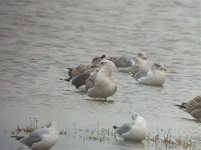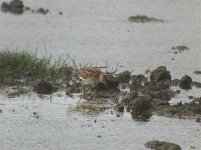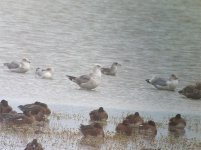john miller
Well-known member
They can also be eaten. Not wishing to cause offence to any veggie burger munchin, bambie lovely pinkos who read this thread, but they also taste rather good.
Usually for sale in the Holt butchers
John
They can also be eaten. Not wishing to cause offence to any veggie burger munchin, bambie lovely pinkos who read this thread, but they also taste rather good.

I’m looking for opinions on the best reference book for British/passage birds. I have one or two “basic” editions and am looking for something with a bit more detail on juvenile/immature plumage, etc. Any advice gratefully received.
Agreed, hence I highlighted it. Would be on a par with the 1983 movement (extract from BB: Vol 78 611-637):That figure is astonishing.
'As sure as I can be' (to quote the iSpot terminology) - I emailed BirdGuides, where I first saw the record. They'd got the report from RBA, so I rang Will at RBA who confirmed the reported figure was at least 278.Are you sure it’s not a typo.
it goes to show how easy it might be to make assumptions about where Jays are coming from when we see them at this time of year, especially when we know there are a lot moving nearby. I've seen loads inland recently, but I always do at this time of year - they're always much more visible, and they move around too. A few birds flying along the coast need not be continental immigrants: they could equally be birds dispersing from inland and not wanting to cross the sea. That said with all the migration being recorded on the near continent and the very large numbers being reported in Kent (and, if the Cley count is gen, now in Norfolk too) there seems little doubt that at least some of them are from the Continent.
How confident are people in identifying Continental Jays based on visual appearance as opposed to flock size and flight path? I used to think I could do it but lost confidence in my judgement - is it straight forward enough given appropriate views?
And where are the Nutcrackers and Hawk Owls?
Over to the local sky-watchers to confirm
The field east of the Beach Road at Salthouse was, this morning, graced (?) with hundreds of geese, of various species (Barnacle, Canada, Greylag), non-species and monstrosities. Whether any of these were truly wild is another matter.
Is the one in the LH shot somehow related to Ross’s Goose ?
Anyone know what the water levels are like at Titchwell and Cley? A visiting friend wants to photograph some waders so I am trying to decide which way to head. Also is the pec still at Kelling?
Would the acorn failure theory also explain why I see one blog in Norfolk mentioning a viz mig Nuthatch and the fact that I've had a Nuthatch on my feeder for the first time?
The Nuthatch in my garden has also been feeding on seed on the concrete ground, something I have never seen before!
Has anyone else seen a spread of Nuthatches or birds in unusual places this Autumn?
Anyone know what the water levels are like at Titchwell and Cley? A visiting friend wants to photograph some waders so I am trying to decide which way to head. Also is the pec still at Kelling?
Plenty of mud exposed at Titchwell. When I was there yesterday ruff, black-tailed godwit and spotted redshank were feeding right up against the west bank path.



Can grey squirrels be shot?
668 Jays south over Hunstanton 0700-1230 hrs today (Sat) - largest flock 62 birds
